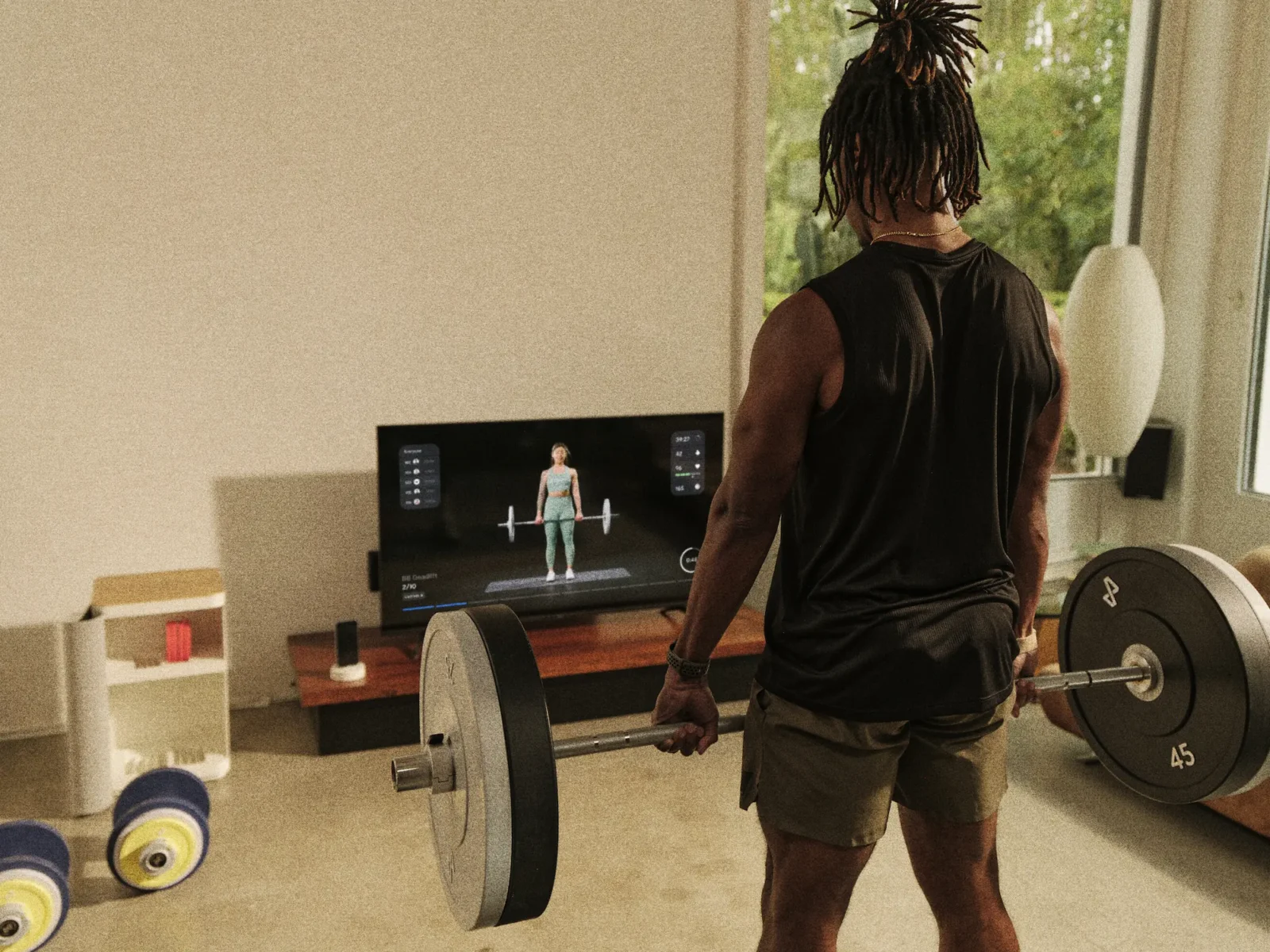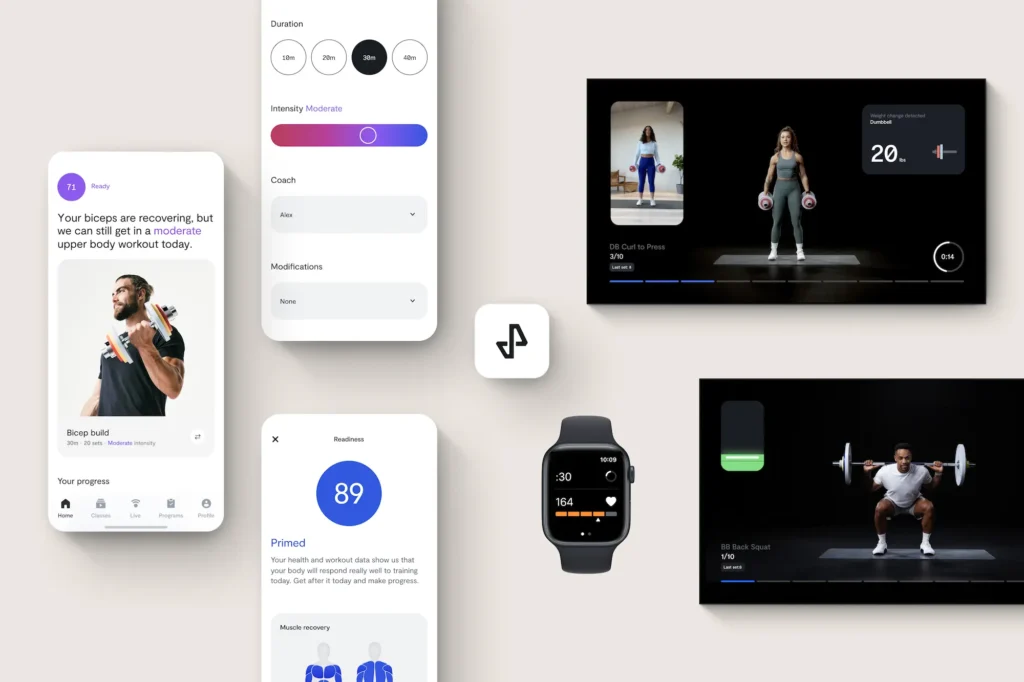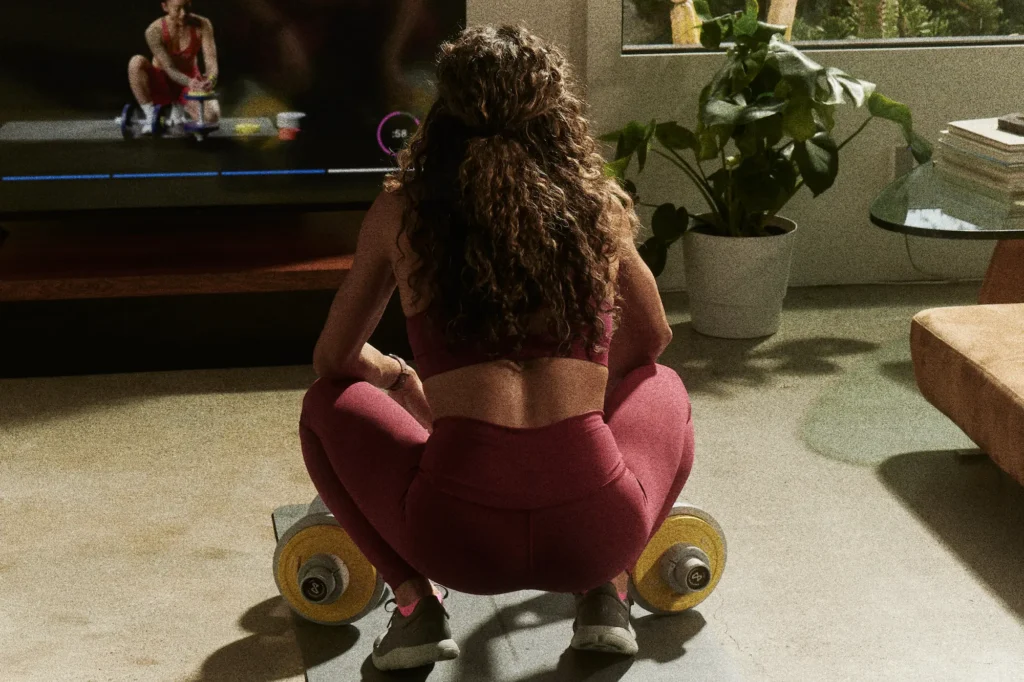Hyper-Personalized Training: Inside Tempo’s Plan To Revolutionize Connected Fitness With AI

Leveraging AI and using data like sleep quality and heart rate, Tempo now creates workout plans that are hyper-personalized and adaptable over time
When Moawia Eldeeb started Tempo nearly a decade ago, his goal was to build the world’s best personal trainer using artificial intelligence (AI).
The smart home gym company may have already reached that goal, releasing a set of new features that leverage biometric data, body composition information and 3D cameras to create workout plans that are personalized for each individual and adaptable over time.
“We’ve built a training experience that surpasses what any human being can offer,” Eldeeb tells Athletech News. “We’ve been Beta testing it for a month and the results have been fantastic. Now we’re launching it to the world.”
Starting Tuesday, Tempo will look at data including sleep quality, fitness activity and heart rate to calculate a “Readiness Score” for users each day. Using the score, Tempo’s AI system will provide a unique daily workout for each user designed to create optimal strength-training results.
“Every day, you get a training plan that’s designed for you and your body,” Eldeeb explains. “And every day, it’s checking in on your body and readjusting the training plan to create the optimal workout for you that day.”
Tempo’s Plan to Change Fitness

Eldeeb, Tempo’s co-founder and CEO, created the company to democratize access to high-quality personal training using technology. The smart home gym system is built around strength training and uses AI and 3D cameras to help people lift weights with proper form.
From the consumer’s perspective, the Tempo system is pretty simple: users receive a set of smart weights – some combination of dumbbells and a barbell depending on the package they choose – that are tracked by AI-powered sensors. The sensors track the way your body moves during various exercises, allowing Tempo to deliver real-time feedback on form.
After years of collecting workout data, Tempo launched its first product in 2020, the Studio, which retailed for over $2,000 but currently sells for $1,695. In 2021, the company received $220 million in Series C funding to help it scale. That same year, Tempo introduced Move for $395, giving users a lower-priced option. The next year, it released an even cheaper product, Core, which currently sells for just $245.
During that time, the smart home gym company has been hard at work refining its tech and conjuring up new and exciting ways to use the millions of data points it collects on users and their workouts.
The result is Tuesday’s announcement, which the company boldly proclaims will “redefine connected fitness” by offering the first truly individualized personal training experience.
In-Workout Customization
In addition to providing individually tailored daily workouts, Tempo will also adjust and optimize routines in-workout based on biometric data it pulls from wearables like Apple Watch or Whoop and the information it collects from its 3D cameras.

During a workout, Tempo can adjust and optimize weight, reps and rest time based on biometric data and performance.
For example, Tempo tracks your heart rate and prescribes the optimal amount of rest time in between sets. Eldeeb notes heart rate zone 1, which is between 50-60% of HR max, is ideal for weight lifting, so Tempo ensures you’re in that range before your next set begins.
Tempo also adjusts the amount of weight you’re asked to lift based on performance. If you’re moving the barbell or dumbbells too fast during a set, the system will prompt you to increase the weight. As a final fail-safe, the system asks users to input the amount of “reps in reserve,” or reps they had left in the tank during a set. Tempo uses that information in conjunction with other data to optimize reps and weight.
As part of its new rollout, Tempo also introduced expanded range-of-motion tracking and exercise recognition. Using 3D camera technology, the Tempo system now tracks range of motion for lower and upper body movements to ensure you’re lifting the right amount of weight with the proper form.
“If you’re doing a squat, it will show you in real-time how deep you’re going to make sure you go below your knees,” Eldeeb explains.

Progress Makes Perfect
In the same spirit of hyper-personalization, Tempo now provides users with a level of information about their body composition that usually requires a trip to the lab and a hefty bill to obtain.
When logging into the Tempo app for the first time, the system gives users the option of doing a body-composition scan. Using the iPhone’s camera, Tempo takes 150 photos of your body in 10 seconds. With the magic of AI, the app returns metrics including body fat percentage, lean muscle mass and the circumference of muscles like biceps and quads.
That information allows Tempo to create training plans that are bespoke to users’ body measurements. It also allows the AI to learn which exercises are the most effective for individual users.
“Tempo can learn which exercises are actually getting you bigger arms or bigger shoulders, because we know everything you’re doing,” Eldeeb explains.
Another important byproduct of the body-composition information: people can see the progress they’re making while using Tempo.
“On a scale, you might not see the number go down after one month, but you’ve actually gained a pound of lean mass and your body fat percentage went down slightly,” Eldeeb explains. “These things are super motivating to people. It shows that you’re getting ROI from your workout.”
It’s why Tempo now feels comfortable guaranteeing users will see progress if they follow Tempo’s workouts for one month.
“If you start with us on week one, we are confident that by week four, you will see and feel progress,” Eldeeb says.

The Future of AI and Fitness
The new rollout has the team at Tempo feeling understandably confident that they’ve built the best connected fitness product on the market. They also believe they’re leading the way when it comes to using AI to help people achieve their fitness goals.
“We’ve already done a lot of what would have been hoped for and expected of AI and tech in fitness,” Eldeeb says of Tempo’s current feature set. “This just brought it all together.”
There’s still room for improvement, the Tempo co-founder is quick to point out. He says the company will take the next several months to fine-tune and tweak the new features it’s rolling out to make them even better.
After that, Eldeeb says Tempo still has work to do on the motivation front. Part of his mission with Tempo is to get as many people to reap the benefits of strength training as possible.
To motivate users, Tempo could look to add more social features or even connect users with accountability partners who can train together and motivate each other to work out.
The smart home gym company also may look into ways it can use AI to create training plans that help people train for specific performance goals.
At the end of the day, Eldeeb believes Tempo stands out from other connected fitness companies because it’s dedicated to solving a problem that actually exists in the fitness world.
“Everyone’s so busy chasing content, but they’re not solving problems that are actually getting in the way of people’s fitness,” he says. “I think we’re focused on the right things, building an incredible training product and then figuring out how to keep people motivated to train.”



